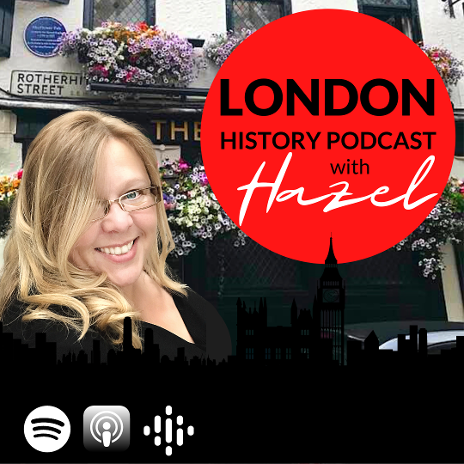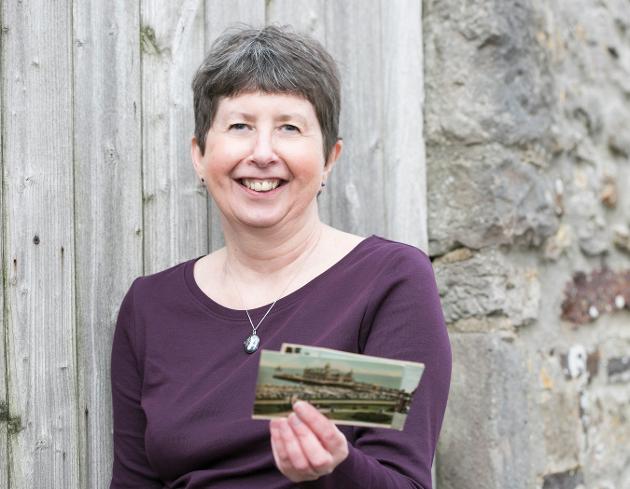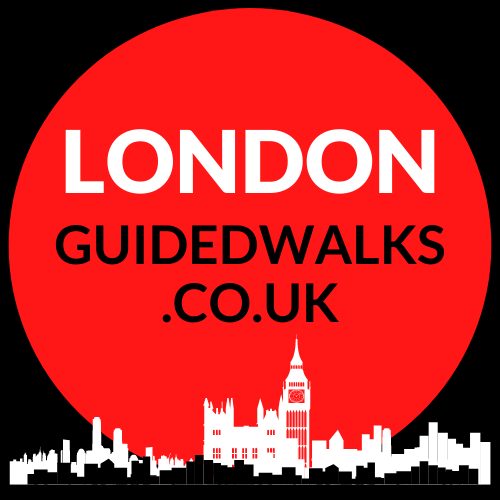
Episode 73: Great Ormond Street Hospital
Join host Hazel Baker as she speaks to guest Helen Baggott about postcards from the past she has found and researched, showing the early history of Great Ormond Street Hospital.
Listen Now: Apple Podcasts | Spotify |Android |RSS
Get our latest episode in your inbox here
Support us on Patreon from as little as £5.
Gain access to exclusive content including behind the scenes videos, full transcripts, shout outs and mini videotours!
Show notes:
Hazel Baker: Hello and welcome to our London history podcast, where we share our love of London, its people, places and history. This podcast is designed for you to learn things about London that most Londoners don't even know, all in 20 minutes. I am your host Hazel Baker, qualified London tour guide and CEO of www.londonguidedwalks.co.uk
Our walking tours are for those who love London and want to make the most of their time here, no matter whether it's for a weekend or a lifetime. We aim to deliver insightful and well-prepared London guided walks with genuine enthusiasm and professionalism. And in this podcast, we try to do exactly the same.
If you enjoy what we do, then please rate and review. You could become a patron for as little as five pounds. That’s where we share additional videos of the interviews with you. Plus lots of other unique content. You help us keep this podcast advert free. All information can be found on our website www.londonguidedwalks.co.uk/podcast
Get that cup of tea, put your feet up and enjoy!
Hazel Baker: Joining me in the studio today is Helen Baggott.
She's an editor and writer from Dorset. She has a love affair with postcards, and you might remember her being a guest before, while she's been researching some new projects and now has got some wonderful stories to tell us all with a London and links. So hello.
Helen Baggott: Hello, Hazel. Lovely to see you and join you today.
Hazel Baker: I'm looking forward to this one. Now they're always quite quirky and I never know what twists and turns you're going to do. So I'm holding onto my seat now.
Helen Baggott: Well, you're not the only one that doesn't know because when I began researching the postcards, I never know where I'm going to be led. All I know is that I can find the person who received the card in an official record. And that's my starting point. And I use the same resources that would be familiar to people who watch, who do you think you are or how through time? So that's the census returns, passenger lists, birth marriage records, probate records, anything which will confirm the identity of the person on the card to the place the card has been sent to. Now very often a card can be quite mundane. And I really don't know if there's going to be anything interesting to find out about the person.
And one of the cards I researched quite recently was sent from Australia to an address in fill-in palace road in London. And it was sent to Anna who was a music teacher. And she was a spinster in her late thirties at this time, I think. And that really could have been the story because she lived with her two sisters. Her father had made musical instruments. But it was only later when I continued the research that I discovered that she actually married a couple of years after the postcard had been sent.
Now the postcard sent from Australia to her wasn't signed. And so I didn't know who had sent it. But when I looked at the marriage records for her, I found that it had been sent to her by the man she eventually married because I was able to match the handwriting on the postcard to that on the marriage register. And he only put his initials actually on the postcard. But I was able to see that he, he was actually Edgar Nodes and his profession was listed as Undertaker. And he had worked in Australia for a couple of years, but he was actually from the UK. And so I was able to look at his family tree and discovered that his siblings, cousins, uncles, his father, and his grandfather were all involved in the business of being undertakers. And in fact, his grandfather was listed as a coffin maker as well.
What was so surprising about this family, apart from them all being involved in this business was the Edgar's first cousin, Horace was actually president of the British Undertakers Association. And after the first world war, he was asked by the British government to arrange for the bringing home of the unknown warrior. And this is something that Horace Nodes organized. So he had the coffin built, he went over to France with it, and then arrange for the soldier to be brought home. And he accompanied the soldier on HMS burden back to the UK. And that to me was an amazing insight into what happened behind the scenes of the unknown warrior, because if you look at images of what happened, it's always the procession going to Westminster Abbey. It's the dignitaries. And it's the official images that you see and learning about Edgar Nodes and his cousin Horace allowed me to see what actually happened to actually bring the soldier home.
So it's a wonderful example. Perhaps an average postcard turning into something quite special and quite important I feel. But the postcards I'mgoing to talk about for the remainder of the podcast all linked to something quite special in London.
Hazel Baker: Fantastic. And for anybody who doesn't know about the unknown warrior, I will put a link to the blog post that I wrote about that so you can read a little bit more and we'll also include some photos that Helen is talking about of these postcards in the show notes as well. So londonguidedwalks.co.uk/podcast. Alrighty. So Helen, you have a couple of treats for us. Where do you want to start?
Helen Baggott: I'm going to start with The Mayflower, which really is a very roundabout way of introducing the first card I'm going to be talking about. I was putting together a series of postcards, which would illustrate the story of The Mayflower. And that was postcards from the UK, from Holland, and in America. And I wanted to follow the story of a family from Dorking in Surrey.
William Mullins, who was a boot maker in the town. He was actually one of the investors in the forage. His family weren't going necessarily for religious reason. And I needed a postcard of Dorking and it needed to be a postcard which was sent more than a hundred years ago. And obviously then I needed to be able to trace the recipient and I really was running out of time on, on this stage of the project, but I decided I would just open up the search to a general view of Dorking rather than where the family lives.
And I found a postcard which had been sent from Dorking to America. Now the Mullins family lived in west street in Dorking and this postcard was sent to west street in California, which was a nice coincidence to set me off. Find the family to whom the postcard was sent. It was sent to the Whitford family in California, and it was sent to the young son of the family. There were two sisters, the son, and then the parents, Samuel Whitford, and his wife. Samuel Whitford was a Gardner in America.
When I created the family tree, I found that actually the family emigrated from England and were actually from London. And they emigrated in 1895. And so I was able to find them in 1891. And as I created the family tree, I find actually Samuel was a silversmith in London and he was actually the third generation in the family of silversmith and they we're all Samuel's. So his father and grandfather, all Samuels. And in fact, although the postcard was sent to Leonard in America, his real name was Samuel. So it's very, very confusing. But anyway so in, in London I find the family and find that the Whitford family as silversmiths we're very successful. And one of the addresses where the family lived was in St. Pancras and in offspring road and they were there in 1881. But coming up in the records for Samuel who emigrated and also his father was that they were involved as secretaries in hospitals in London. And as I carried on researching, I found that Samuel the second was secretary to a children's hospital in London.
And of course my ears pricked up and I thought, well, the most famous of children's hospitals possibly is Great Ormond Street Hospital. And so I continued the research and confirmed that actually Samuel the second was secretary of Great Ormond Street Hospital. In fact, he was the first secretary of the hospital and he was there for more than 32 years.
At the same time he was still working as a silversmith. As I said, they were successful as a family business and he employed men. So he was able to combine both roles. At the beginning. He was actually a voluntary, it's a voluntary role at Great Ormond Street Hospital, but he later became employed as the first secretary of the hospital. He was there for 32 years. And the archives at Great Ormond Street Hospital are absolutely fascinating. And the archivists that helped me was able to provide some wonderful information. And it was estimated that during the 32 years, that Samuel was there, 460,000 children were treated. And in today's monetary values nearly 20 million pounds was raised which is a fantastic amount of money because although he was secretary, Samuel was also helping to raise money. And if you think about the generosity of JM Barrie and how he gifted the hospitals, the royalties to Peter pan, that was much, much later. And when the hospital opened although obviously it was a much smaller enterprise, it still needed money. And so he would arrange lectures and sponsorship of the beds.
And Charles Dickens was one of the sponsors. By coincidence Samuel the third, who is the Samuel who immigrated, he was also involved in a children's hospital in London, and that one also benefited from the support of Charles Dickens. So it's a lovely indication of who the Whitford family we're dealing with.
Now I wasn't able to discover why the family became involved in the children's hospital and that information isn't in the archives at the hospital. And I still don't know why Samuel the third emigrated to America and became a Gardner. But that was confirmed by the hospital archives he sent back from America correspondence that he felt should be kept in the archives. And he mentioned in that correspondence that he was working as a gardener. So I know it's the correct family and that the research I had already completed was, was correct.
Well, I was actually looking for more information about the hospital. I came across a postcard, which is of the exterior of the hospital, and this was sent after the Whitford family had moved on. But it was sent by someone who worked in the hospital and the message on the postcard mentions that the person has just been out for a walk and is about to go on duty. And they've marked the view of the hospital with a adult. And they've explained in the message. This is where they they're working and they're sent to an address in Scotland and I wasn't able to actually discover who received the card. And I never actually have been able to confirm who sent it.
The archivist at Great Ormond Street Hospital spent some time trying to match the handwriting on the card with perhaps the writing of a doctor. Although, of course it could have been a nurse. It could have been, could have been anyone that worked in the hospital. He did come up with one suggestion, but when I looked at other examples of this person's handwriting, I don't feel it was a good enough match for me to say, I know with certainty who, who sent the card, you can imagine this person enjoying seeing the scenes and then going into the hospital and caring in some capacity for the children.
Now, when I was looking for a view of the hospital and this happens all the time, I, you know, I go off on a tangent and I don't mind cause I think that's part of the fun, but I came across some postcards which were actually sent to children who were patients in the hospital.
So the first postcard was sent to a young girl called Doris Smith. Now she was eight years old when she was admitted to the hospital. Doris was actually admitted by a doctor, Oswald Addison. Now he eventually with his wife had a practice in Harley street. And though his wife wasn't listed on the records I found as a doctor, she was working in hospitals. And so whether or not she was classed as a doctor, I wasn't able to confirm. But the records I found for Dr. Addison show that he must've been a very, very special person. One part of his biography says that he was a painstaking and careful operator. He was gifted with dexterity and gentleness. Now, I think if you're in trusting the care of a child to a doctor, that would be a wonderful thing to know about the doctor. Now, because I was able to research Doris, I know that she was admitted for an internal abscess. She was discharged 16 days later.
Also, I find that her father was a Drapers Porter in Romford where the family lived. But her mother Jeanie, she was born in Whitechapel. She was actually in the 1881 census in the Nag's Head Yard in Whitechapel, which I was able to find out a small amount of information about , but I think just the name is enough, a synonymous with Victorian London, Nag's Head Yard. I thought that was wonderful.
The other card that I find that the sent to a child was sent to a Harry Preble. Now he was the son of a policeman in the metropolitan police. And he was admitted when he was only six years old and his postcard was sent to him by his brother who later would become a sailor in the Royal Navy in the first world war. Harry was admitted with a kidney disease and very sadly, he didn't actually survive the treatment. You know, I feel we have Doris now I know she was discharged. She was treated successfully. And I know that she later became a secretary for an estate agent and lived a long and hopefully healthy life. Now, Harry wasn't so fortunate. He died a couple of weeks later after the postcard would have been sent. So very, very sad for Harry, but what I find fascinating. Well, one of the things I find fascinating about these postcards is that they tell us who these people were that were able to access treatment in the hospital.
Now Harry's father was, as I've said, a policeman, they lived a couple of streets away from Great Ormond Street Hospital. So you have Doris who was living in Romford, but no London, obviously because of her mother's roots. But then you have Harry who actually lived within a few minutes walk of the hospital. And so these were working class families. And as though they both supposed to fathers had good jobs, relatively speaking, they wouldn't have been Wellsy people. And so it's wonderful to get that insight into the familes who were able to benefit from the work of Samuel Whitford and the others that followed on from him.
To me. It was a fascinating journey into learning about Great Ormond Street Hospital, which in general terms, I think most people will know about. But then you actually look at the people involved behind the scenes. And I was never able to discover what motivated the Whitford family to become involved in children's hospitals, but it doesn't matter. Thankfully, there were people that find some reason to become involved. And here we are nearly a hundred years later and children are still benefiting from it.
Hazel Baker: It's lovely, isn't it? I mean, I do remember growing up in the eighties and we did the big, Great Ormond Street Hospital campaign. Or do you remember there was a-
Helen Baggott: I do,I have raised money for it as well.
Hazel Baker: Yeah, my grandma was knitting like crazy and my two sisters and I, we had the Ormond Street the, the little unhappy child, you know, files, you remember that? And then of course, whether they were successful in raising all the money as she did another one with a smiley child face.
Our childhood. Now, as you're saying, you know, just little things, isn't it? Whether it's you know, hearing stories or being part of a campaign and thinking about all those people that you're talking about I would not have been able to afford a doctor. If it hadn't been for Great Ormond Street Hospital and places like that, you know? We're so lucky with the NHS now, aren't we? We don't really-
Helen Baggott: We are, we are. But the foundations were being built you know, by previous generations. And I think this is the thing that when you look at these people, there's a continuity and you can see, obviously you can see it with our own families where you have all of your ancestors and it's the same with all of these things. You know, with Great Ormond Street Hospital, the people that opened the hospital originally. The people that raised the money to keep it open and then the medical teams and the research and all of these things that are happening today are all there because of what happened with Samuel Whitford and his contemporaries.
Hazel Baker: Yeah. Lovely pioneers.
Helen Baggott: Yeah, indeed. Indeed. Yeah.
Hazel Baker: Brilliant, Helen. Thank you very much.
I don't know about you, but I can listen to Helen and the stories that she's uncovered all day. If you haven't heard her previous podcast, Episode 14, then head there now I'll include a link to that in the show notes. And if you want even more then why not buy her book Posted in the Past second delivery, revealing more true stories written on a postcard.
That's all for now. See you next time.

Guest: Helen Baggott
Helen Baggott is an editor and writer from Dorset. Her love affair with postcards began when her parents bought a card sent from America. The card, sent to a soldier killed in WWI, proved so interesting a research project that, years later, Helen continues to research postcards and write about them.
Other Episodes
072 Drs William and John Hunter
069 Victorian Actor William Terriss
067 London Street Names: Food Edition
064 Medieval Toilets in London
062 James Scott, the First Duke of Monmouth
061 Medieval London at the Museum of London
060 Virginia Woolf & The Bloomsbury Set
058 Greenwich Palace and Hospital
057 The Gerald Coke Handel Collection
053 Benjamin Franklin in London
051 Walk Through London's Forgotten Places
047 Victorian Dinosaurs in Crystal Palace Park
046 Beer, The Bard & Historic Buildings of Bankside
045 Drawing London's Buildings
042 John Julius Angerstein: The Man Behind the National Gallery
041 London's Medieval Friaries
040 Charles Dickens in Greenwich
038 The Black Death: London's First Plague
037 Bridgerton & Regency London
034 London's Old Shops - Food & Drink
031 Abandoned London Underground Stations
030 Quirky Street Names - Little Britain
029 The Harp maker of Fitzrovia
024 The Walbrook in Roman London
021 London Area Names - Animal Edition
020 The Great Fire of London - How It Began
017 The Proms & The Royal Albert Hall
016 Women in 1920s London (From Cowgirl to Congress)
014 Postcards From London's Past
013 London Statues: Medical Women
012 The Old Operating Theatre Museum
011 London's Coffeehouses and Commerce
009 Music Halls and Cabaret - from yesterday to today
008 The Monument to the Great Fire of London
006 Hockley in the Hole Clerkenwell
Some links contain affiliate links, which means that if you click on one of the product links, we receive a small commission. This helps support our free podcast. Thank you for the support!
Copyright London Guided Walks and Treasure Hunts

